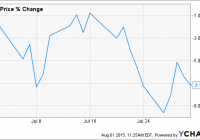RSX: My Prediction For 2016
The next year is around the corner, and it’s high time to look at RSX prior to the Russian holidays. Oil stays low and poses a major threat to the economy. At current oil price levels, RSX is overvalued. Those who follow the Market Vectors Russia ETF (NYSE: RSX ) closely probably know that I’ve been bearish on Russia the whole year. Lately, I’ve been commenting on the tensions between Russia and Turkey , the impact of the continuing oil price decline on the Russian economy and the exchange rate of the Russian ruble. As the year ends, it’s logical to make a prediction for 2016 and leave the topic to develop until the end of January. Why the end of January? First and foremost, the Russian Central Bank will announce its key interest rate on January 29, 2016. In its next meeting, the Central Bank won’t have the luxury of waiting and will have to either support the economy by cutting the 11% rate or choose the course of supporting the ruble and leave the rate or even increase it. I think that this will be the pivotal moment. Also, keep in mind that Russia has long New Year holidays that last from January 1 up to January 10. In practice, low volume trading and muted business life typically last from the last week of December up to the “Old New Year” on January 14. To those interested, the “Old New Year” date is the New Year date in Julian calendar, which was observed in Russia until 1918, when Gregorian calendar was implemented. Expect increased volatility and false moves during this period. It is clear that the main determinant for both the Russian market and the Russian economy is the oil price. If you believe that oil will go to $70 – $80 per barrel in 2016, then you should clearly buy RSX or other Russian ETF. I am in the bearish camp for oil, at least for 2016. My base-case scenario for Brent oil is $40 at best, and I think that oil will first go lower and could rebound only at the end of 2016. My main point is that if oil stays at current levels, the Russian market is significantly overvalued and will drift lower. Here’s why. We’ve yet to see more action from the Central Bank, but I think that at current oil levels we will not get to the ruble-denominated oil price of 3150 which is needed for the budget. This will lead to extreme devaluation of the national currency. For example, if this was to happen right now, the ruble would have dropped from 71 rubles per dollar to 85 rubles per dollar. This is too much, as Russia still depends heavily on imports (this statement was previously challenged by some readers, but I stand by my views and tried to explain them in more detail in the comments sections of previous articles). I think that the resulting exchange rate will likely be a compromise between the needs of the budget (and all the export companies, which are the majority of the Russian stock market) and the needs of curbing inflation. My prediction is that the ruble will settle in the area which allows 2900 – 3000 rubles per barrel of oil, implying 10.5% – 14% downside for the currency and for the dollar-denominated RSX. Also, I believe that constraints that low oil puts on the Russian economy are not fully reflected in the price of RSX. The Central Bank is predicting that GDP contraction will slow to 0.5% – 1.0%, but I think that these are optimistic figures. In the current oil price environment, there is no way to balance the interest of export-oriented companies, which are the majority of RSX holdings , and the economy. This problem will result in damage to every Russian company. All in all, I think that RSX is overvalued by 15% – 20% at current oil price levels. The downside increases if oil drops further, and such a drop will likely lead to a catastrophic liquidations of positions and a huge drop of RSX. On the other hand, if oil manages to deliver a major rally, the whole thesis will go bust. The next year is already behind the corner, so we will soon know how the thesis plays out.
